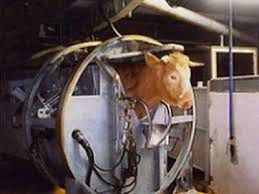QUALITY AND SAFETY
What is traceability? And how to optimize identification processes?
Optimized production processes require transparency.
Growing competition as well as more and more strict rules of law require the optimization of production processes. This, in turn, requires high transparency, which is guaranteed by traceability.
Traceability means the possibility of specifying and tracking each step of the production process chain.
At the same time, it ensures automatic documentation of all production stages and all products used – including time, place and course.
All information is available in real time, therefore it is possible to make adjustments already in the course of the process.
Traceability provides great transparency of the production process and ensures quality in every respect.
Traceability supports safety from the legal point of view and guarantees product quality :
– introduction of quality management
– observance of legal provisions
– avoiding – or at worst – regulating product recall campaigns
– reduction of costs
– increasing customer satisfaction
– increasing productivity
– improving profitability.
Traceability can be guaranteed through identification systems, as they make it possible to register the flow of all production batches and track any data. Quality and product data are read with the use of bar codes placed directly on products. This happens during the current process, therefore they are always available in real time and for years, as faultless documentation is guaranteed.
Traceability involves tracking of product status within the whole food chain, starting from the production, through the distribution, to the sales, which makes it possible to determine its origin and quality, and the origin of raw materials of which it was made.
The idea of traceability is not new, as numerous companies have used it for decades for their own purposes. In Europe, it is currently a well-known issue related to food industry. This is caused by the fact that companies attach more and more importance to product quality and safety and to consumers’ requirements related to the placement of detailed information on foodstuffs.
Traceability has been defined in the Regulation EC/178/2002, which applies to all foodstuffs and animal feedstuffs as well as all entities operating in the food and feed industry. Importers must also record the country of origin and the exporter of a given product. Traceability makes it possible for every organization participating in the food chain to identify the status of a product one step back and one step forward.
Traceability allows companies to track not only products, but also processes. However, this requires a system that enables monitoring in the whole food chain, provides information on the used ingredients and shows the influence of applied production and logistics practices on the quality and safety of the final product.
In order for a traceability system to be effective, it must be based on modern IT technologies.
Studies show that most consumers in the European Union and the United States are ready to pay higher prices for products containing information on the country of origin, geographical region and granted certificates.
Providing such information on labels may also prevent food adulteration.
The labelling itself is not traceability, but it is an important element of it, which enables physical monitoring of the product. It can also be used as an effective way of product differentiation and brand creation. As a result, while selecting products the consumer has access to detailed information on a given foodstuff.
Traceability is a procedure that enables automatic tracking of a product or service from the creation to the final recovery.
The main aim of traceability is to identify numerous products or services in order to remove them in the event of non-compliance or risk.
Traceability makes it possible to control the quality of products and the origin of raw materials.
Then information is checked, including the identification of nature, frequency, duration and structure.
Traceability begins with animal slaughter and ends with product packaging for sales.
Product certification is preceded by the physical presence of ritual controllers.
Our certification involves the placement of ”Al-Haq-Halal” seal, self-adhesive tapes and labels on products that we control.
During the control, our controllers never leave their authentication equipment unattended or unsecured.
Carcasses are stamped with the use of an ink used for food, in a colour selected by a slaughterhouse, in accordance with applicable regulations. Meat is controlled by ”Al-Haq-Halal” buffers on a carcass corresponding to the original pattern from a slaughterhouse.
Packages are sealed with a special ”Al-Haq-Halal” tape.
After conditioning, ”Al-Haq-Halal” labelling is performed by our controllers.
Orders for ”Al-Haq-Halal” equipment are placed in a discreet and confidential way.
Labels are numbered and secured.
”Al-Haq-Halal” certification is visible for consumers through a logo placed on each certified product.
To sum up, traceability improves the quality, service and general efficiency of the company.






